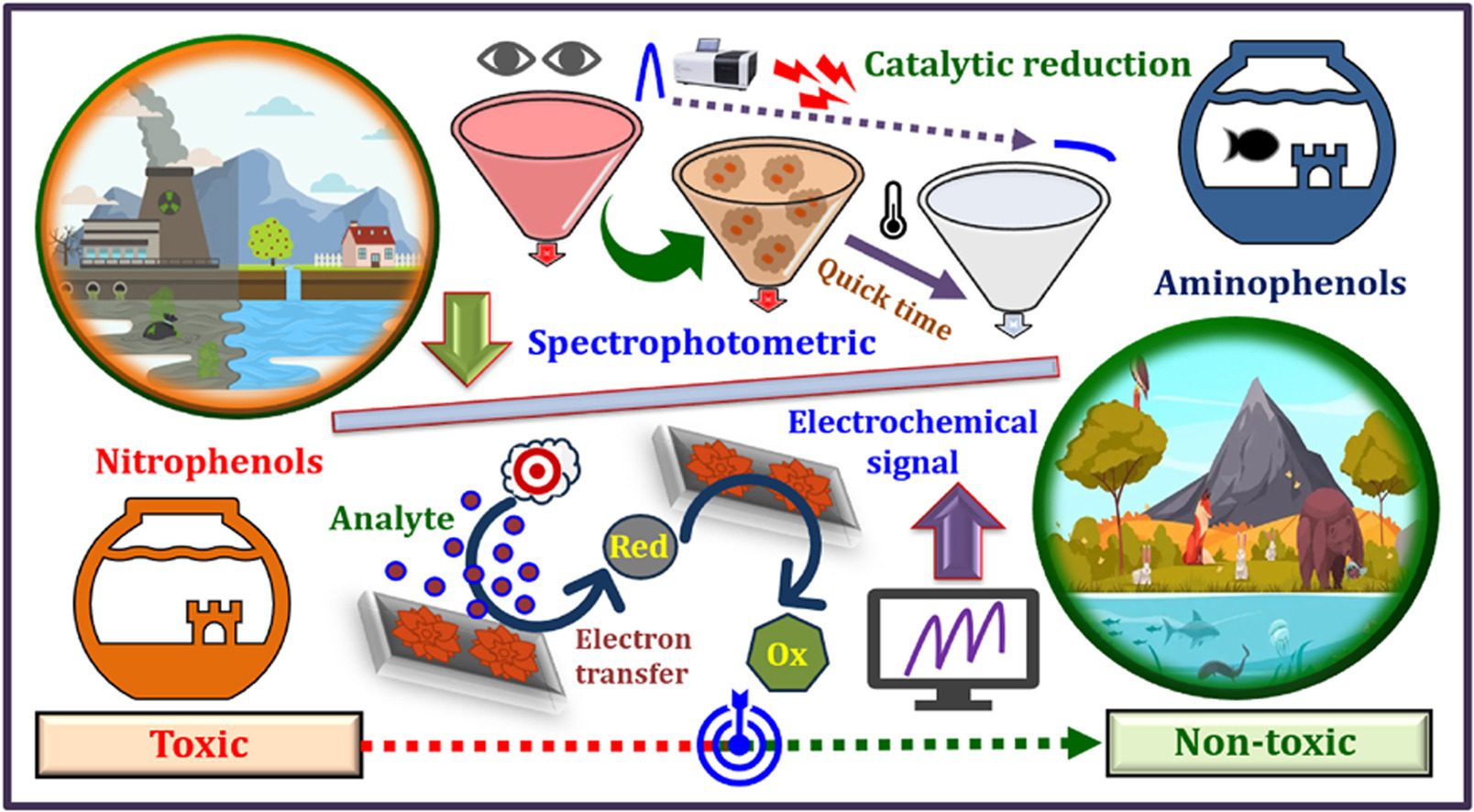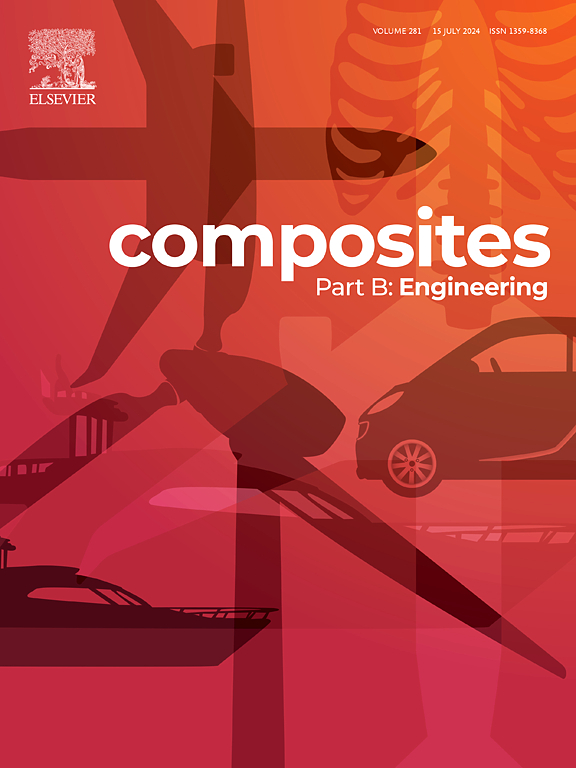Developing a binary composite of covalent organic framework and gold microstructures: Highly efficient dual-mode catalyst for analysis of nitrophenol isomers and their oxidative products
For the first time, we report a triazole-based COF with AuMSs and demonstrate its feasibility for catalytic applications of NPIs and their oxidative products. COF with AuMSs have attracted much interest due to their outstanding catalyst, accelerated hydrogen rate reactions, very active sites, superior adherence to the surfaces, and exemplary stability.

Technology Overview
Morphologically tuned gold microstructure embedded in a nitrogen-rich covalent organic framework. Nitrophenols and their oxidative products were catalytically reduced and sensitively detected. Electrochemical sensor exhibits wide linearity and nanomolar LODs with simultaneous detection. AuMSs-BTCOF exhibits a simple, efficient, and short reduction time to complete the catalytic reaction. The platform was designed to be used in environmental and biofluid samples and validated.
Applications & Benefits
This research presents a novel AuMSs/BTCOF composite material with significant applications in environmental monitoring and chemical synthesis. This composite serves as a highly effective dual-mode sensor for nitrophenol isomers (NPIs), capable of precise and stable detection even at trace levels in complex samples like wastewater and colored fluids. Beyond sensing, the material also demonstrates excellent catalytic activity, efficiently reducing NPIs to less harmful aminophenol isomers (APIs) within minutes. This dual functionality offers a powerful tool for both environmental remediation and the sustainable production of valuable chemicals.
Abstract:
As a key hazard, nitrophenol and its byproducts are a vital raw material in the industry and potentially released into aquatic environments, which affects the ecosystem and severely threatens living systems. It is crucial to detect nitro-hazards quantitatively and systematically. The unique structures of isomer separation and catalytic reduction are highly complex in a single system, not yet reported detection method. The present report constructed robust gold-microstructures (AuMSs) with bis-triazole-derived covalent organic framework (BTCOF) was developed to analyze the dual-mode application of electrochemical redox signals and catalytic degradation of nitrophenol isomers (NPIs) and their oxidative products. The synergistic interaction of tunable surfaces on binary materials enhanced catalytic efficiency, faster kinetic rates, and poor passivation effect. Based on the variance in pKa values, both NPIs and nitrosophenols (NSPIs) could be identified, peak separated, and sensed simultaneously. A catalyst combined with NaBH4, enabled NPIs reduction within 10 minutes. This proposed electrochemical method achieved a nanomolar LOD (1.82, 1.67, and 1.15 × 10−9 M for o-, m-, and p-NPs), excellent sensitivity to ultrawide linear range concentrations while being selective, and reproducible. Moreover, AuMSs-BTCOF/GCE detected NPIs in the industrial effluents and biofluids with recovery rates between 94.70 to 99.95 ± 0.18 % with RSD of 2.86 %. The electrochemical result was validated by conventional method with proven statistical analysis (error 4.02 %). In the catalytic reduction of NPIs, the catalyst is more than 89.24 % efficient, and durable stability. The designed system has proven to be an effective, sensitive, and accurate dual-detection tool for monitoring environmental targets and diagnosing diseases.

Developing a binary composite of covalent organic framework and gold microstructures: Highly efficient dual-mode catalyst for analysis of nitrophenol isomers and their oxidative products
Author:Ponnusamy Arul, Sheng-Tung Huang, Chinnathambi Nandhini, Chi-Hsien Huang, N.S.K. Gowthaman
Year:2024
Source publication:Composites Part B: Engineering, Volume 281, 15 July 2024
Subfield Highest percentage:98% Industrial and Manufacturing Engineering #5 / 402
https://www.sciencedirect.com/science/article/pii/S1359836824003044
